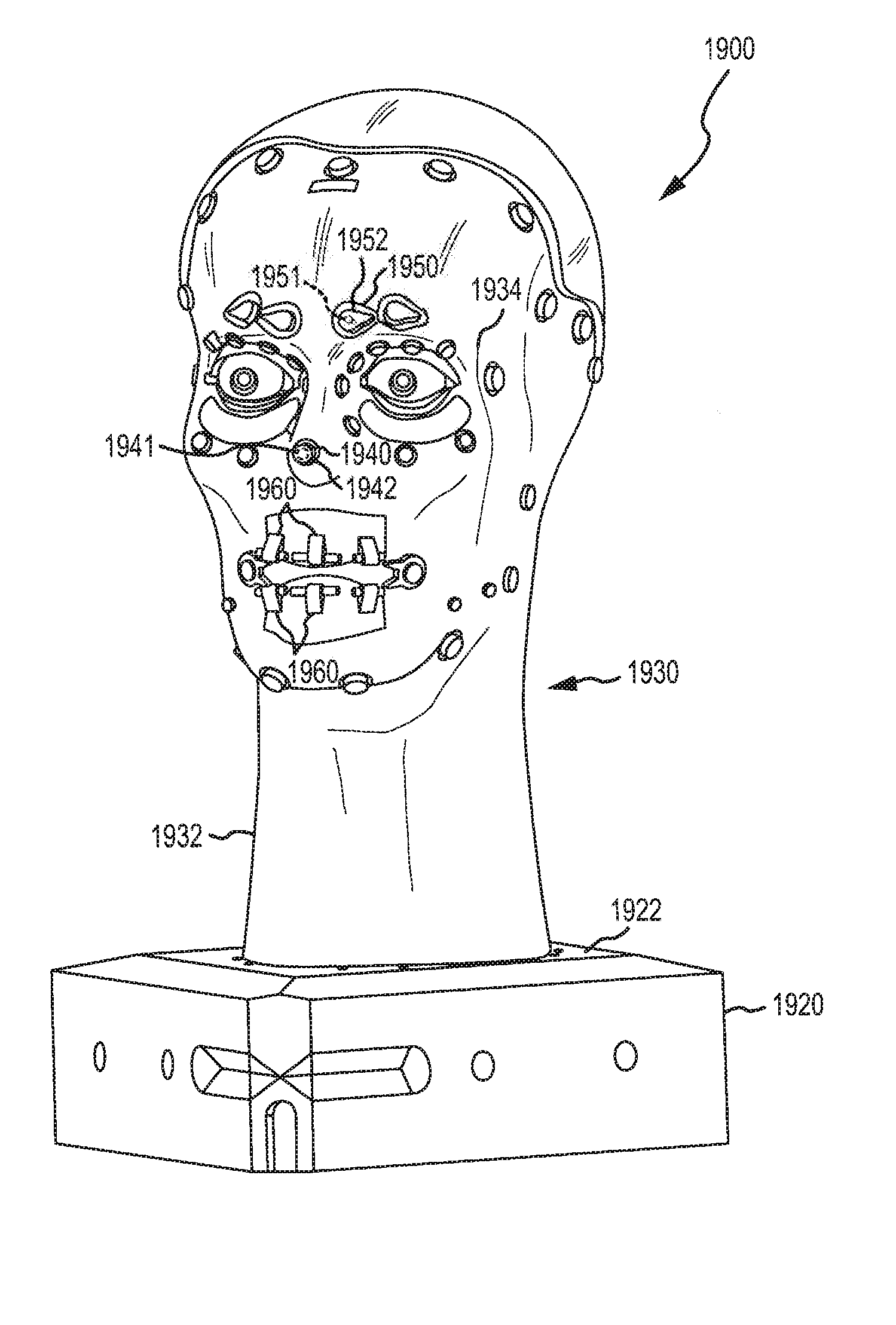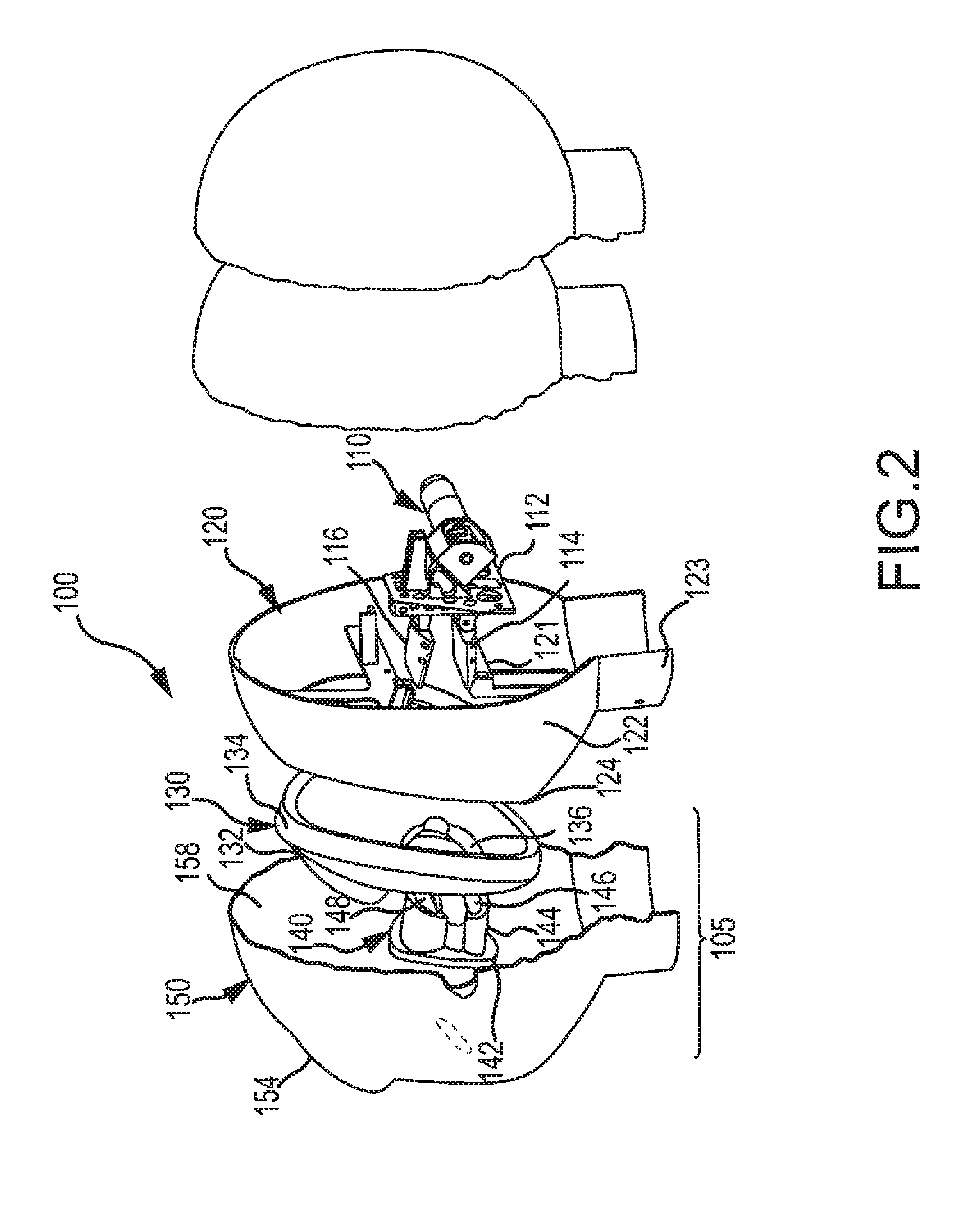Modeling skin-covered robotics devices including artistic digital iterative design processes
a robotics device and digital iterative design technology, applied in the field of creating realistic skin for robots, can solve the problems of undesirably localized movement, skin layer that has a tendency to move, and maintain the realistic or desired movement or facial animation still, so as to facilitate additional prototyping and altering, uniformly distribute forces
- Summary
- Abstract
- Description
- Claims
- Application Information
AI Technical Summary
Benefits of technology
Problems solved by technology
Method used
Image
Examples
Embodiment Construction
[0039]Briefly, embodiments of the present invention are directed to fabrication methods for products or items that include skin systems (e.g., robots or other structures / assemblies that incorporate skin systems) for providing extremely realistic looking facial movement or animation or providing a desired covering of an internal structure and / or moving parts. The following description highlights the use of the assembly and fabrication methods with robotics-based products and devices and, particularly, a robotic head, but the concepts described are readily extended to other applications in which an internal structure or support is covered with a skin or covering. The following discussion begins with a general overview of one useful skin system and then proceeds to a discussion of a general assembly method for a product or apparatus using such a skin system. The resulting product and its components (e.g., a unitary exterior skin layer, multiple interior skin components, rigid structura...
PUM
| Property | Measurement | Unit |
|---|---|---|
| thickness | aaaaa | aaaaa |
| thickness | aaaaa | aaaaa |
| distance | aaaaa | aaaaa |
Abstract
Description
Claims
Application Information
 Login to View More
Login to View More - R&D
- Intellectual Property
- Life Sciences
- Materials
- Tech Scout
- Unparalleled Data Quality
- Higher Quality Content
- 60% Fewer Hallucinations
Browse by: Latest US Patents, China's latest patents, Technical Efficacy Thesaurus, Application Domain, Technology Topic, Popular Technical Reports.
© 2025 PatSnap. All rights reserved.Legal|Privacy policy|Modern Slavery Act Transparency Statement|Sitemap|About US| Contact US: help@patsnap.com



